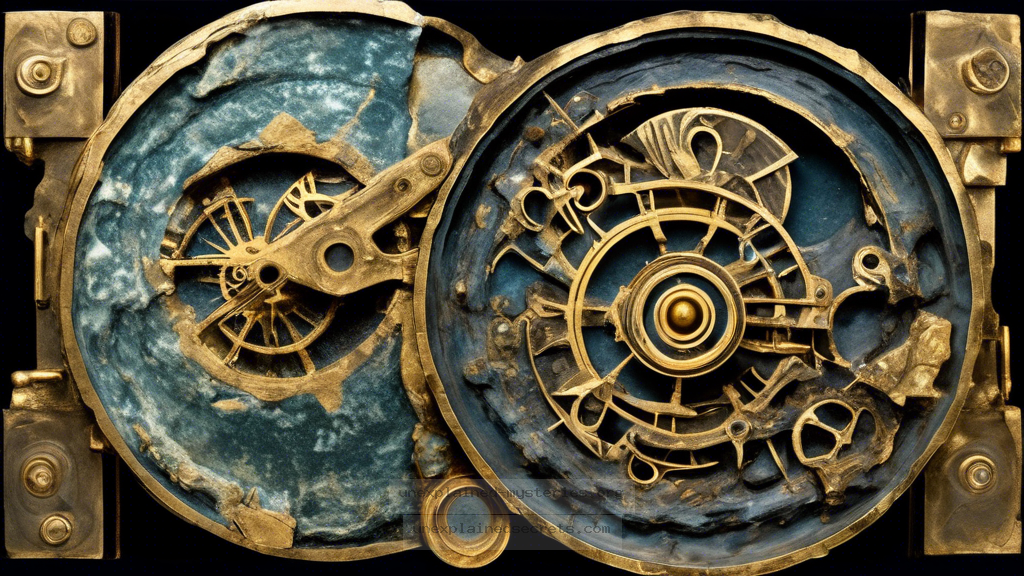What Secrets Does the Antikythera Mechanism Hold About Ancient Greek Technology?
What Secrets Does the Antikythera Mechanism Hold About Ancient Greek Technology?
The Antikythera Mechanism, discovered in a shipwreck off the coast of Antikythera, Greece, in 1901, is one of the most compelling puzzles of ancient history. Often regarded as the world’s first analog computer, this intricate device has challenged historians and scientists alike. What makes it so intriguing is not just its complexity but the implications it holds for our understanding of ancient Greek technology and knowledge. The question of what secrets this device holds can reveal much about the sophistication of ancient civilizations and their capabilities in science and engineering.
Historical Context of the Antikythera Mechanism
The Antikythera Mechanism dates back to around 150-100 BCE and was thought to be used for astronomical calculations, including predicting eclipses and the positions of celestial bodies. Its discovery in a Roman-era shipwreck provided a glimpse into the technological prowess of the Hellenistic period. This was a time when Greece was a melting pot of knowledge, culture, and innovation, which flourished after the conquests of Alexander the Great.
This device comprises at least 30 interlocking bronze gears and is housed in a wooden case about the size of a shoebox. The complexity of its gear systems has led researchers to believe that the Greeks had a far greater understanding of mechanics and astronomy than previously thought. For a long time, the Antikythera Mechanism was seen as an isolated artifact, a technological anomaly in an otherwise primitive world. However, recent studies have begun to unravel its significance in the broader context of ancient science.
Core Concepts and Theories of the Mechanism
At its core, the Antikythera Mechanism is believed to have been designed to track the cycles of the solar system. It could predict the positions of the Sun, Moon, and possibly the five known planets of the time: Mercury, Venus, Mars, Jupiter, and Saturn. The device operates through a complex system of gears, which is a concept that was not commonly understood until the 14th century in Europe.
Key Insights:
- The mechanism demonstrates advanced knowledge of astronomy.
- It indicates that ancient Greeks had a sophisticated understanding of mechanical engineering.
- The device’s existence challenges the timeline of technological development in human history.
One of the most significant theories about the mechanism is that it was used for educational purposes, allowing students of astronomy to visualize celestial movements. Additionally, some researchers suggest that it may have played a role in religious or agricultural calendars, helping to determine the timing of festivals or planting seasons.
Practical Implications and Evidence
The implications of the Antikythera Mechanism extend beyond mere curiosity; they challenge existing narratives about technological development in the ancient world. The intricate design and precise functions of the device imply that the Greeks possessed advanced mathematical knowledge, likely derived from earlier Babylonian and Egyptian astronomical practices.
Recent examinations using X-ray imaging have revealed even more gears than initially thought, indicating a level of complexity that scholars are still working to fully understand. The device’s construction suggests that it required skilled craftsmanship and an understanding of differential gears, a concept not seen again until the Middle Ages.
| Feature | Antikythera Mechanism | Modern Analog |
|---|---|---|
| Purpose | Astronomical predictions | Weather and astronomical forecasting |
| Complexity | 30+ gears | Computers with millions of transistors |
| Era of Development | 150-100 BCE | 20th-21st Century |
| Material | Bronze | Silicon, metals, plastics |
Alternative Perspectives on the Mechanism’s Use
While many scholars agree on the Antikythera Mechanism’s astronomical functions, alternative theories propose other uses. Some researchers suggest it could have been a navigational tool for sailors, helping them predict celestial events that would allow for better maritime navigation. Others hypothesize that it may have had a more ceremonial or mythological purpose, linking celestial phenomena with ancient Greek religious practices.
Additionally, there is an ongoing debate about the extent of technological knowledge in the ancient world. Some scholars argue that the mechanism is evidence of a lost tradition of advanced engineering, while others believe it was an anomaly, unique to a specific time and place. This divergence of opinions highlights the need for further exploration and research into ancient technologies.
Common Misconceptions About the Antikythera Mechanism
One common misconception about the Antikythera Mechanism is that it represents the pinnacle of ancient Greek technology, suggesting that no further advancements were made until the Renaissance. However, evidence of similar devices and astronomical knowledge exists in cultures such as the Mayans and the Chinese, who also developed sophisticated tools for tracking celestial movements.
Another misconception is that the mechanism was widely used during its time. In reality, it is believed that the device may have been a prototype or a specialized tool rather than a commonly utilized instrument. The rarity of similar artifacts raises questions about how widespread this technological knowledge truly was.
Clarifications:
- The Antikythera Mechanism is not the only ancient device of its kind.
- It likely served a specific purpose rather than being a mass-produced tool.
Best Practices for Investigating Ancient Technologies
Investigating ancient technologies like the Antikythera Mechanism requires a multidisciplinary approach. Researchers from fields such as archaeology, astronomy, engineering, and history must collaborate to piece together the puzzle of ancient knowledge. Here are some best practices for conducting such investigations:
- Integrate Multiple Disciplines: Combining insights from different fields can lead to a more comprehensive understanding of ancient technologies.
- Use Modern Technology: Employing advanced imaging techniques, such as X-ray and CT scanning, can reveal hidden components and mechanisms.
- Conduct Comparative Analysis: Studying similar artifacts from different cultures can provide context and highlight the uniqueness of the Antikythera Mechanism.
- Engage with Public Scholarship: Sharing findings with the public can foster interest in ancient technologies and encourage further research.
Future Developments and Ongoing Research
Research into the Antikythera Mechanism is ongoing, with new discoveries and theories emerging regularly. Recent advancements in technology have enabled researchers to analyze the device in greater detail, uncovering previously unknown functions and features. For instance, studies have suggested that the mechanism may also have included a dial for tracking the Metonic cycle, a 19-year period used in lunar calendars.
Future developments may include reconstructing the device to better understand its operation and educational applications. This reconstruction could also provide insights into how ancient Greeks viewed their place in the cosmos and the significance they placed on celestial events.
Future Research Directions:
- Exploration of similar devices in other ancient cultures.
- Reconstruction and functional analysis of the Antikythera Mechanism.
- Further investigation into the socio-political context of its creation.
Conclusion
The Antikythera Mechanism stands as a testament to the ingenuity of ancient Greek civilization and challenges our understanding of technological advancement. Its complex design and multifaceted functions reveal a sophisticated grasp of astronomy and engineering that was previously underestimated. As research continues, this ancient artifact not only sheds light on the past but also raises questions about the trajectory of human knowledge and the potential for lost technologies. By unraveling the mysteries of the Antikythera Mechanism, we gain a deeper appreciation for the capabilities of ancient societies and their contributions to the development of science and technology.
Other Articles
Recent Posts
- What Happened to Flight MH370? The Conspiracy Theories That Still Haunt Us
- What Secrets Lurk Within the Walls of the Infamous Trans-Allegheny Lunatic Asylum?
- What Evidence Supports the Existence of Bigfoot in the Pacific Northwest?
- What Happened to the Indus Valley Civilization? Unraveling the Mysteries of Ancient Urban Life
- Can Telepathy Be Scientifically Proven Through Laboratory Evidence?







